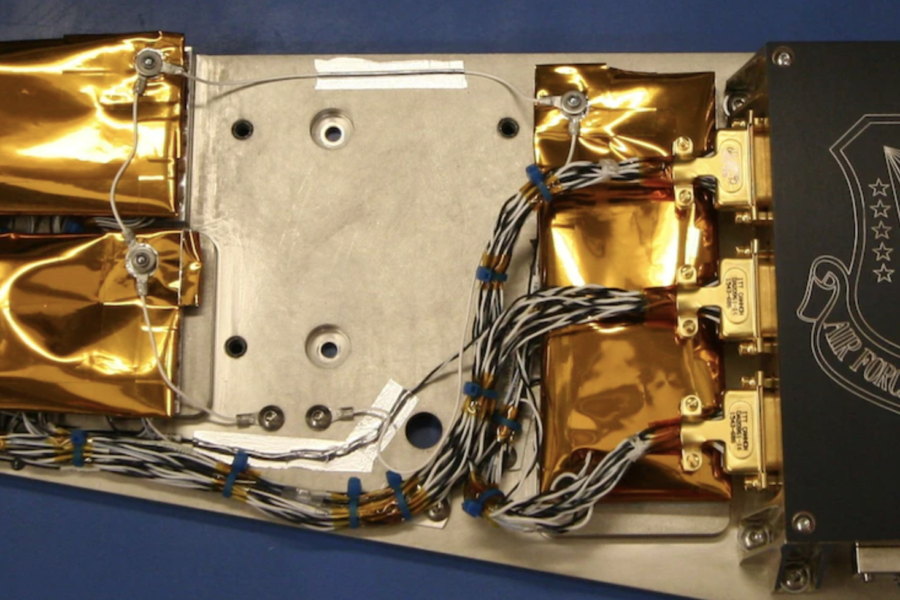The Air Force Research Laboratory will soon have the first operational oscillating heat pipes flying in space, marking the first operational application of fourth-generation spacecraft thermal control. The technology was previously tested aboard the secretive X-37B reusable spaceplane, AFRL said.
The laboratory is partnering with ThermAvant Technologies and its system integrator, Maxar Technologies, to develop and deploy the technology, which is lighter weight, “highly-efficient,” and more affordable than the thermal management subsystem used today, according to an AFRL release. Satellites need to dump heat generated from their own electronics and from the sun to avoid ruining their systems, including optics and atomic clocks.
“Oscillating heat pipes have flown in space before, but now OHPs are being relied upon to serve a mission purpose,” said Jon Allison, the thermal thrust lead for the Spacecraft Component Technology Branch of the AFRL Space Vehicles Directorate. “The on-orbit operation of OHPs marks an important milestone in the technology transition.”
AFRL began looking at OHPs in 2008. ThermAvant, based in Columbia, Mo., developed the OHPs through a Defense Department Small Business Innovation Research contract, and AFRL’s Space Vehicles Directorate designed and built the hardware, along with a few other companies, for an orbital test in 2012. The technology flew again aboard the fifth X-37B Orbital Test Vehicle flight in 2017, which stayed in orbit for a record-setting 780 days.
The heat pipes themselves are static, but the fluid inside oscillates causing the heat transfer, according to the release. “The OHP is a simple, wickless heat pipe capable of rejecting more than 200 times the maximum heat load of an axially grooved heat pipe, and transporting more than 45 times more heat than copper,” according to AFRL.
Allison said this new technology could be used in space for the next 20 years.
“We have seen how every generation heralds a new era in spacecraft thermal control by introducing a new, revolutionary technology,” Allison said. “The first generation used only thermal conduction, the second generation introduced heat pipes, and the third generation introduced loop heat pipes. The advent of each new generation enabled larger, more powerful spacecraft.”
However, Allison predicts the fourth-generation technology will do the opposite, focusing instead on “smaller and more powerful spacecraft.”
